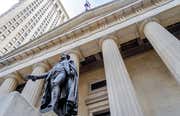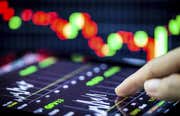Born: 1950 (Laurinburg, North Carolina)
Key Positions: J.E. Baker Company
Legg Mason Capital Management
Santa Fe Institute
Personal History:
Bill Miller graduated with a degree in economics from Washington & Lee University in 1972. After graduation, he went to work for J.E. Baker, Co. and eventually became its treasurer. In 1981, Miller left to work for Legg Mason Capital Management, with whom he has spent the majority of his career. Between 2007 and 2016 Miller worked as chairman and chief investment officer of Legg Mason. In late 2016, after 35 years at Legg Mason, the asset management firm announced that it would part ways with Miller.
Miller has garnered some of the highest praise and lowest criticism of any fund manager in recent memory. Between 1991 and 2005, Miller toppled Peter Lynch’s record of returns by beating the stock market 15 years in a row. Considering that only about 25% of stock funds have managed to do that each year, the odds of a single fund beating the stock market 15 years in a row are incredibly low.
While Miller gained critical fame for his work during this period with Legg Mason, he also was lampooned in the recent film The Big Short. The film’s fictional “Bruce Miller,” modeled after the real-life Miller, engages in a debate in the film in which he vehemently defends his investment in Bear Stearns even as attendees at the conversation rush for the doors upon news that the bank’s stock was plummeting. While this is a fictional depiction, it does seem to share some elements of truth; Miller did suffer major losses with the downfall of Bear Stearns. For this reason, Miller occupies a position as one of the brightest star fund managers in history, as well as one of those whose hubris and oversight led to a downfall around the time of the 2008 financial crisis.
Investment Philosophy:
In November of 2006, Fortune Magazine's managing editor, Andy Serwer, characterized Bill Miller's investing style as iconoclastic: "You simply can't do what he's done in the supremely competitive, ultra-efficient world of stock picking by following the pack …The fact is that Miller has spent decades studying freethinking overachievers, and along the way he's become one himself."
Miller characterizes himself as a value investor, although his view of value investing tends to be different from the traditional model. Specifically, Miller feels that any stock can be a value stock, provided that it trades at a discounted level relative to its intrinsic value.
Miller credits his massive success in the 1990s and early 2000s with two primary factors: exhaustive security analysis and portfolio construction. In his 2006, fourth-quarter letter to the shareholders for Value Trust, Bill Miller explains how these two factors work:
Value investing means really asking what are the best values, and not assuming that because something looks expensive that it is, or assuming that because a stock is down in price and trades at low multiples that it is a bargain … Sometimes growth is cheap and value expensive. . . . The question is not growth or value, but where is the best value … We construct portfolios by using ‘factor diversification.' . . . We own a mix of companies whose fundamental valuation factors differ. We have high P/E and low P/E, high price-to-book and low-price-to-book. Most investors tend to be relatively undiversified with respect to these valuation factors, with traditional value investors clustered in low valuations, and growth investors in high valuations … It was in the mid-1990s that we began to create portfolios that had greater factor diversification, which became our strength …We own low P/E and we own high P/E, but we own them for the same reason: we think they are mispriced. We differ from many value investors in being willing to analyze stocks that look expensive to see if they really are. Most, in fact, are, but some are not. To the extent we get that right, we will benefit shareholders and clients.
Noteworthy Publications:
- "The Man Who Beats The S&P: Investing With Bill Miller" by Janet Lowe (2002)
Quotes:
"I often remind our analysts that 100% of the information you have about a company represents the past, and 100% of a stock's valuation depends on the future."
"The market does reflect the available information, as the professors tell us. But just as the funhouse mirrors don't always accurately reflect your weight, the markets don't always accurately reflect that information. Usually they are too pessimistic when it's bad, and too optimistic when it's good."
"What we try to do is take advantage of errors others make, usually because they are too short-term oriented, or they react to dramatic events, or they overestimate the impact of events, and so on."
The Greatest Investors: John Neff
-
 Trading
TradingHerman Miller Tracks Its 'Reversion to the Mean'
Furniture maker Herman Miller is relatively cheap with a P/E ratio of 13.80 and a dividend yield of 2.12% in a 2018 consolidation. -
 Investing
InvestingShort Sellers Poised to Profit in the Bull Market
Short Sellers' Paradise: even the bull market is providing opportunities -
 Investing
InvestingActive Managers Mount a Major Comeback
Many active managers are enjoying a rebound in performance this year. -
 Financial Advisor
Financial AdvisorOverview of Top 4 Legg Mason Funds (SBLGX,LMOPX)
Discover how to diversify retirement savings using two broad-based Legg Mason Funds. Learn about two funds that can significantly increase returns. -
 Investing
InvestingA-B InBev to Cut 5,500 Jobs After SABMiller Merger
Now that the regulatory hurdles have been cleared and the shareholder votes are planned, the hard work of planning the integration of SABMiller (NASDAQOTH: SBMRY) into Anheuser-Busch InBev (NYSE: ... -
 Investing
InvestingWhat Is The Value In Value Investing?
Value investing has its advantages, but it also has significant drawbacks. We look at the pros and cons. -
 Investing
InvestingA-B InBev Sells Assets From Miller Merger Deals
Brewing giant Anheuser-Busch InBev (NYSE: BUD) is in the midst of selling the assets it agreed to shed in order to convince regulators to sign off on its $100 billion acquisition of SABMiller. ... -
 Investing
InvestingStrategies of Legendary Value Investor
In this article, we'll look at some value investing techniques that legendary investors like Warren Buffett have used to identify undervalued companies. -
 Investing
InvestingWinter Products Drive Big 5 Sporting’s Sales
Big 5 Sporting Goods' impressive fourth quarter results bode well for upcoming Dick's Sporting Goods' quarterly report. -
 Investing
InvestingWhy GE's Stock Rebound Will Fizzle: Miller Tabak
The recent surge for GE is more an indication of the stock’s price bottoming out after the selloff in 2017.



